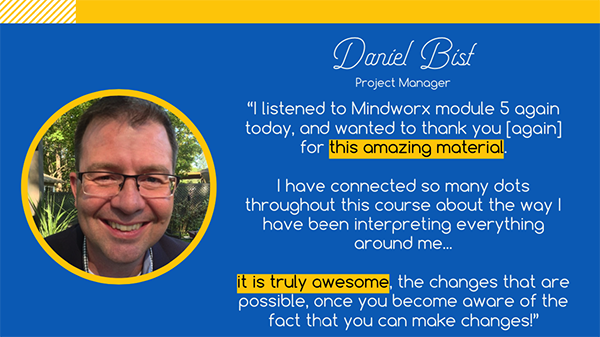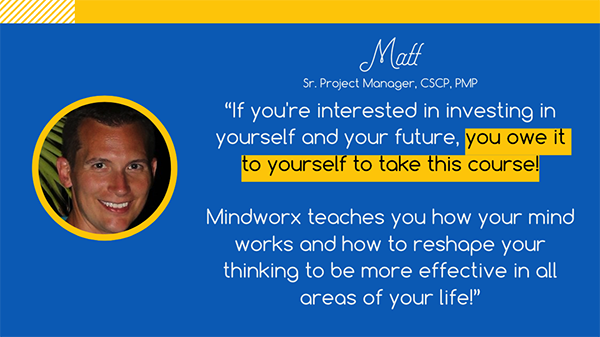Recently I did a lunch-n-learn at a local company that has turned into my most requested presentation ever. It’s called from Chaos to Confidence or from Fog to Focus (depending on the audience.) 😉
In this presentation, the underlying message is about the common reaction or approach to change and the desire to achieve better results.
The focus is that we want better results so we try to force ourselves to take better actions… but it isn’t enough!!
This would work if our actions weren’t inextricably attached to our emotions and thoughts.
I’ve heard so many folks in my past tell me that they don’t make emotional decisions or that they try to take emotions out of business. “Business is business. It’s not personal.”
So, in that respect, are they saying that emotions are only personal? That folks don’t get emotional about business or their work or their careers?
The TEAR Model
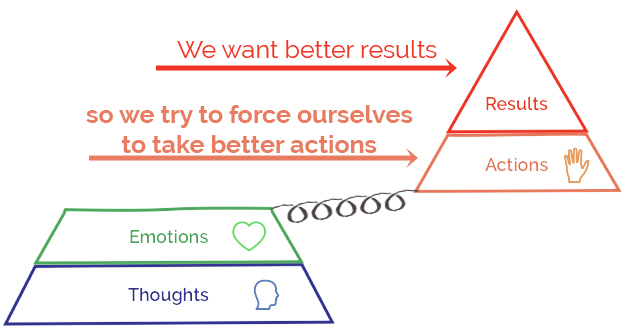
I believe in the T-E-A-R model. That our Thoughts cause Emotions and that it is Emotions that cause human beings to Act. And, of course, it is these Actions that lead to our Results or outcomes. So, when we want to change our Results, we can’t just expect human beings to Act differently. Our Actions are linked to our Emotions and Thoughts. We aren’t robots, after all.
Stress & Anxiety of Change
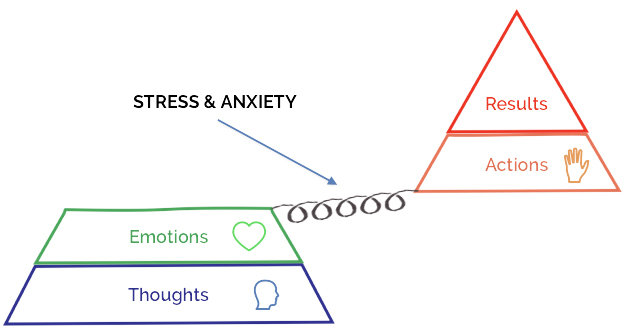
If we force others or ourselves to take action without addressing the emotional and intellectual part of the change, we are causing stress and anxiety that will slow our progress toward our desired goals. It is counterproductive in today’s work environment. Yet, this is what most management techniques employ.
We’re taught to incentivize actions by offering rewards or introducing punishments. This doesn’t address the emotions and thoughts, it masks them. Folks will run toward rewards and avoid punishment for sure, but they won’t do it forever. It just isn’t sustainable. Once the threat goes away or the reward seems less appealing over time, the motivation to act will drastically diminish.
Have you ever experienced this? Let’s say our team completed our project ahead of schedule and under budget so we were given a $3000 bonus. Woo hoo!! Isn’t that awesome?!? Now, we’re on to assignment #2. Things go really well and again the project comes in under budget and early. Terrific! So, then we get our next assignment – #3. WAIT A MINUTE!! What’s missing? Yes, the bonus. The boss comes in and tells us that there is no bonus for completing project #2 early. That last time is was a BONUS – not something that we are promised or should be expected. WHAT!!??
Hypothetically (of course), how well will you perform on our third project together? For most, the emotion of the situation will cause stress and anxiety because they inadvertently expected another bonus and didn’t get one.
In Daniel Pink’s Book, Drive, he talks about using extrinsic motivation (reward and punishment) and how it is ineffective in many of today’s workplaces.
Emotional Intelligence
What is EI or EQ (Emotional intelligence Quotient)? In practical terms, it’s about being aware that emotions drive our behavior and impact people (positively and negatively). It’s about learning how to manage ourselves including managing emotions – both our own and others – especially when under stress or pressure.
And, there’s a very good reason why emotional intelligence is so important in today’s marketplace. We’re no longer just cogs in a manufacturing process. In the knowledge worker era, workers need to bring all of themselves to work. Their main capital is, well, knowledge. Today work is about non-routine problem-solving. Workers need to bring their knowledge together with the knowledge from others. Thoughts and emotions are linked.
Just look at the foundation of the TEAR model… Emotions and Intelligence!
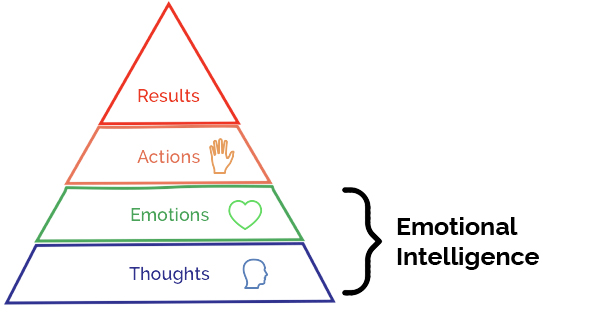
Given the importance of the foundation set by your thoughts and emotions, how ready are you to use these to reach the results you desire?
- Are you proficient at using emotions to create the energy to take the actions that will produce the results that you want?
- Do you know what thoughts you and your team need to focus on to create the emotions that you desire?
- How much of your personal and professional development is focused on EQ or emotional intelligence?
If you are tasked with leading others or working with others to achieve results and create change, you MUST understand your own THINKING and increase your EMOTIONAL intelligence and vocabulary so you can create an environment where you (and others) can ACT in a way that creates the desired RESULTS.
Self-Leadership & EQ
You must understand how your mind works and how to make it work best to create the emotions that you need to do the work you want to do.
Do you ever ask yourself “What was I thinking?” or “Why did I do that?” If so, what was the answer? Mastering your emotions and increasing your emotional intelligence when dealing with others is only accomplished when you understand how your THINKING (more specifically your perspectives or ways of looking at your world) impacts your emotions.
If you really want to achieve better, faster results, you’ve got to learn how to shift the foundation because once you move the Thoughts and Emotions, the Actions and Results will naturally follow. Oh sure, it might take a little longer, but rest assured, the changes will be lasting and sustainable. Oh, and did I mention, a LOT less stressful.
Want to learn the 7 steps to increasing your Emotional Intelligence?
Check out the Mindworx program at http://mindworx.us.
Your satisfaction with this course is guaranteed and you’ll be amazed at how this program will help you reach your goals.
Check it out today! You have nothing to lose and SOOOO much to gain!

